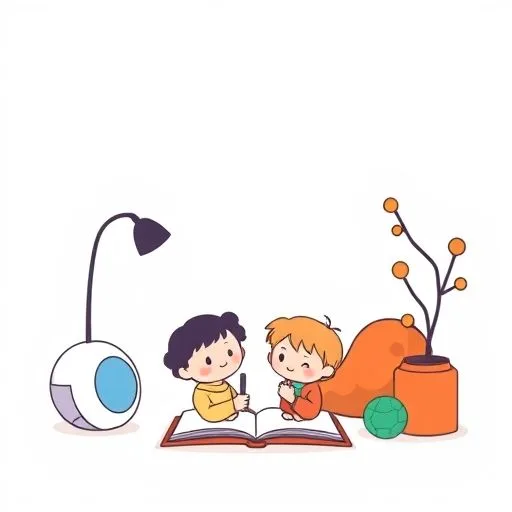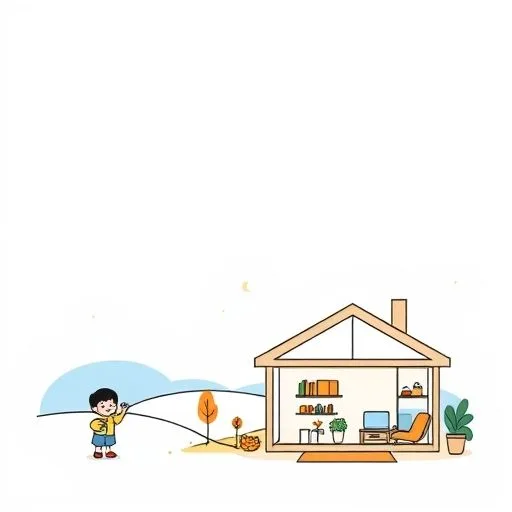
Ever had one of those magical parenting moments where you tuck your daughter into bed after building LEGO castles together, and wake up to find she’s somehow rearranged all the blocks into an elaborate spaceship overnight? That’s the kind of wonder I felt reading about AI tools like Claude Code and Gemini CLI—imagine software that codes, debugs, and even tests entire app features while developers sleep! But here’s the twist: as a dad raising a curious 7-year-old in a world buzzing with tech, I couldn’t help but see this as more than just a coding breakthrough. It’s a glimpse into the future our kids are stepping into—one where AI handles the grind, freeing humans for creativity, connection, and big-picture thinking. And guess what? That future is bursting with hope, not fear, if we guide our little ones with heart, empathy, and a dash of playful curiosity. Let’s dive into what these “while-you-sleep” workflows really mean for families, and how we can turn tech marvels into tools that build not just apps, but brighter tomorrows for our children.
What Does “AI While You Sleep” Mean for Families?

When I first read about Claude Code and Gemini CLI churning out code overnight, my inner data nerd did a happy dance—but my dad heart kicked into high gear. This isn’t just about apps getting built faster; it’s about a fundamental shift in how we work, learn, and connect.
Think of it like this: remember planning family trips before apps existed? You’d spend hours mapping routes, booking hotels, and double-checking schedules. Now, tools like AI handle the logistics, freeing us to focus on the joy of discovery—the impromptu ice cream stops, the hidden playgrounds, the memories we make together.
That’s exactly what these AI workflows are doing for developers. They’re taking over the tedious, repetitive tasks—debugging, testing, pulling requests—so humans can dive into the creative, strategic stuff. And for us parents, that’s huge! It means the world our kids are growing into values empathy, innovation, and problem-solving over rote memorization or mechanical skills.
A recent study even found that AI tools like GitHub Copilot have shown a 26% boost in productivity for some developers, especially juniors and newcomers. It’s a clear sign that when tech handles the repetitive tasks, people can focus on the creative and strategic stuff. And that’s exactly what we want for our kids—creative, strategic thinkers who use tech as a tool, not a replacement for their own ingenuity.
We’re not raising little coders; we’re nurturing curious, kind-hearted explorers who learn through play, collaboration, and real-world experiences.
But here’s the best part: this shift mirrors what we want for our kids’ childhoods. AI automating the “homework” of coding? That’s our cue to double down on raising humans who dream big, care deeply, and use tech as a springboard for good.
How to Explore AI with Your Kids: Turning Tech into Teachable Moments

Okay, so AI is building apps while we snooze—cool! But how do we translate that for our little ones without overwhelming them? Simple: we make it fun, relatable, and full of heart. Last week, my daughter and I were sketching storybook characters together, and she wondered aloud, “What if our drawings could move and talk?” Cue the lightbulb moment! We didn’t dive into coding; we used a kid-friendly AI tool to animate her artwork, and her eyes lit up like fireworks. That’s the magic: blending tech with creativity to spark joy, just like when we mix traditional Korean flavors with modern twists in our family meals. It’s all about finding that perfect balance.
Here’s how you can weave AI literacy into everyday life:
Storytime upgrades: Use AI to generate silly story endings or new characters during bedtime reads. It turns passive listening into co-creation!
Playful problem-solving: Challenge your kids to “train” an AI-like helper (think: a smart speaker) to remember family jokes or suggest weekend adventures. It teaches them how tech responds to human input.
Ethical chats: When AI tools come up, ask questions like, “Should machines make decisions for us?” or “How can we use tech to help others?” It builds critical thinking with a kindness core.
And remember: the goal isn’t to raise mini-coders; it’s to foster comfort with technology in education and beyond, so kids see AI as a tool for creativity, not a replacement for it. Studies show that even experienced developers sometimes overestimate AI’s speed—proof that human intuition and heart still lead the way!
Preparing Kids for a Future Where AI Handles the Heavy Lifting

Let’s get real for a sec: the idea of AI taking over tasks can feel daunting. What jobs will be left? How do we ensure our kids thrive? But here’s the exciting truth—just as AI automates coding, it’s amplifying the need for skills machines can’t replicate: empathy, collaboration, adaptability, and ethical judgment. Think of it like travel planning: apps handle bookings, but humans bring the warmth, curiosity, and connection that make journeys unforgettable.
So, how do we future-proof our kids? By leaning into what makes them uniquely human:
Nurture curiosity: Encourage questions, experiments, and “what if” scenarios. AI can provide answers, but kids must learn to ask the right questions.
Prioritize play: Unstructured play builds creativity, resilience, and social skills—the very traits that’ll set them apart in an AI-augmented world.
Model balance: Show them that tech is a tool, not a lifestyle. Our family’s “screen-free” Sunday hikes? They’re lessons in disconnecting to reconnect.
And for us parents? We get to embrace this shift with hope and excitement, just like when we plan our family adventures. It’s all about finding the joy in the journey. AI handling mundane tasks means more time for what matters: knee-deep in LEGO, lost in picture books, or simply being present. As one study noted, developers using AI tools often felt more productive—even when they weren’t faster—because they focused on meaningful work. That’s the future we’re building: one where tech gives us back time for heart-led moments.
AI Parenting FAQs—Answered with Heart and Hope

Won’t AI make jobs obsolete for our kids?
Not at all! History shows tech shifts create new roles—think social media managers or app developers. AI will handle repetitive tasks, freeing humans for creative, caring, and strategic work. Our job? Raise kids who adapt, innovate, and lead with empathy.
How do I keep my child safe with AI tools?
Start with open conversations about data privacy and “digital helpers.” Use parental controls, choose kid-approved platforms, and always supervise exploratory play. Safety isn’t about fear; it’s about empowered awareness.
Can AI really enhance learning, or is it a distraction?
When woven thoughtfully, yes! AI can personalize education, spark curiosity, and support diverse learners. Balance is key—pair tech with hands-on play, nature time, and real-world connections.
What if my child isn’t “techy”?
No worries! Future success hinges on soft skills—kindness, creativity, resilience—not coding prowess. Encourage their passions, whether art, sports, or storytelling. Tech is just one tool in their toolbox.
Friends, as we navigate this AI-powered era, let’s remember: the most future-proof skill we can give our kids isn’t programming—it’s a heart full of wonder, a mind eager to learn, and the courage to build a brighter world, one dream at a time.
Source: AI Workflows That Build Apps While You Sleep Using : Claude Code & Google Gemini, Geeky Gadgets, 2025/09/12 06:40:02
